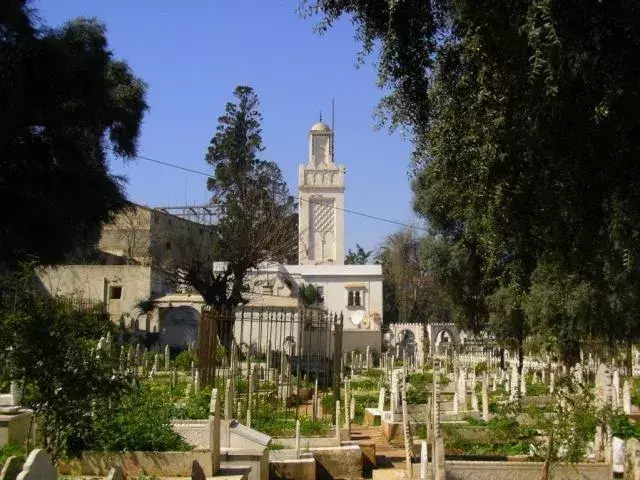
Sidi M’hamed Bou Qobrine Mosque
Overall Rating: ⭐⭐⭐⭐☆ (4/5)
Rating Breakdown:
✔ Historical Significance – ⭐⭐⭐⭐⭐ (5/5)
✔ Architectural Beauty – ⭐⭐⭐⭐⭐ (5/5)
✔ Accessibility – ⭐⭐⭐☆☆ (3/5)
✔ Cultural Value – ⭐⭐⭐☆☆ (3/5)
✔ Maintenance & Preservation – ⭐⭐⭐⭐☆ (4/5)
Weather
- Algiers experiences a Mediterranean climate characterized by hot, dry summers and mild, wet winters.
Tags
- Mosque, Mausoleum, Sufi Heritage, Historical LandmarkAathaar+4Wikipedia+4Wikipedia+4
Timings
- Specific visiting hours are not readily available. It is advisable to visit during standard daylight hours and consult local sources for precise information.
Time Required
- A visit typically requires 1 to 2 hours to explore the mosque, mausoleum, and surrounding areas.
Entry Fee
- There is no admission fee; however, donations for the upkeep of the site are appreciated.
Things to See & Do
- Mausoleum of Sidi M'hamed Bou Qobrine: Pay respects at the tomb of the founder of the Rahmaniyya Sufi order.
- Architectural Features: Observe the traditional Islamic architectural elements of the mosque and mausoleum.
- Cemetery Exploration: Explore the adjacent Sidi M'hamed Bou Qobrine Cemetery, noting its historical significance.
Best Time to Visit
- Spring (March to May) and autumn (September to November) offer pleasant weather, making these seasons ideal for a visit.
Nearest Parking Spots
- Limited street parking is available nearby. Utilizing public transportation or taxis is recommended due to potential congestion.
Overview
- The Sidi M'hamed Bou Qobrine Mosque, located in the Belouizdad district of Algiers, is a significant religious and historical site.
- Established in 1792 by Sidi M'hamed Bou Qobrine, a prominent Islamic scholar and founder of the Rahmaniyya Sufi order, the mosque complex includes a mausoleum housing his tomb.
- The site serves as a center for spiritual learning and a testament to Algeria's rich Sufi heritage.
- Mausoleum of Sidi M'hamed Bou Qobrine: The final resting place of the esteemed scholar and Sufi leader.
- Sidi M'hamed Bou Qobrine Cemetery: An adjacent cemetery that has grown around the mausoleum since the 19th century.
- After spending approximately 30 years abroad, Sidi M'hamed Bou Qobrine returned to Algeria and initially established a zawiya (Islamic school) in his native village of Aït Smaïl. In 1792, he relocated to Algiers and founded the mosque and zawiya in the Hamma district, which later became a focal point for the Rahmaniyya Sufi order.
- Respectful Attire: Dress modestly in accordance with Islamic customs when visiting religious sites.
- Photography: Seek permission before taking photographs, especially inside the mosque or mausoleum.
- Guided Tours: Consider engaging a local guide to gain deeper insights into the site's historical and cultural significance.
- By Taxi: Taxis are a convenient mode of transportation within Algiers and can take you directly to the mosque.
- By Public Transport: Buses and shared minibuses operate throughout the city; inquire locally for routes that pass near the Belouizdad district.
- On Foot: If staying nearby, the mosque is accessible by walking, allowing for an immersive experience of the local neighborhood.